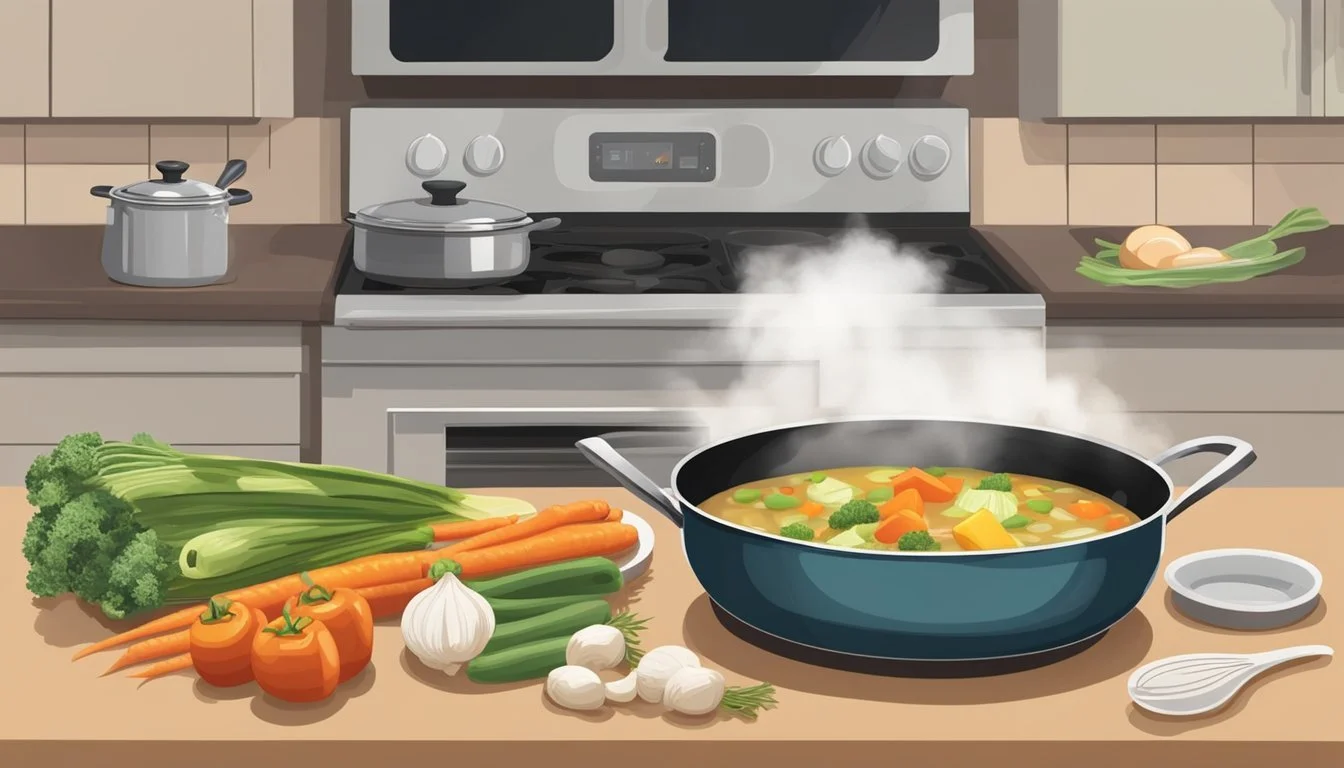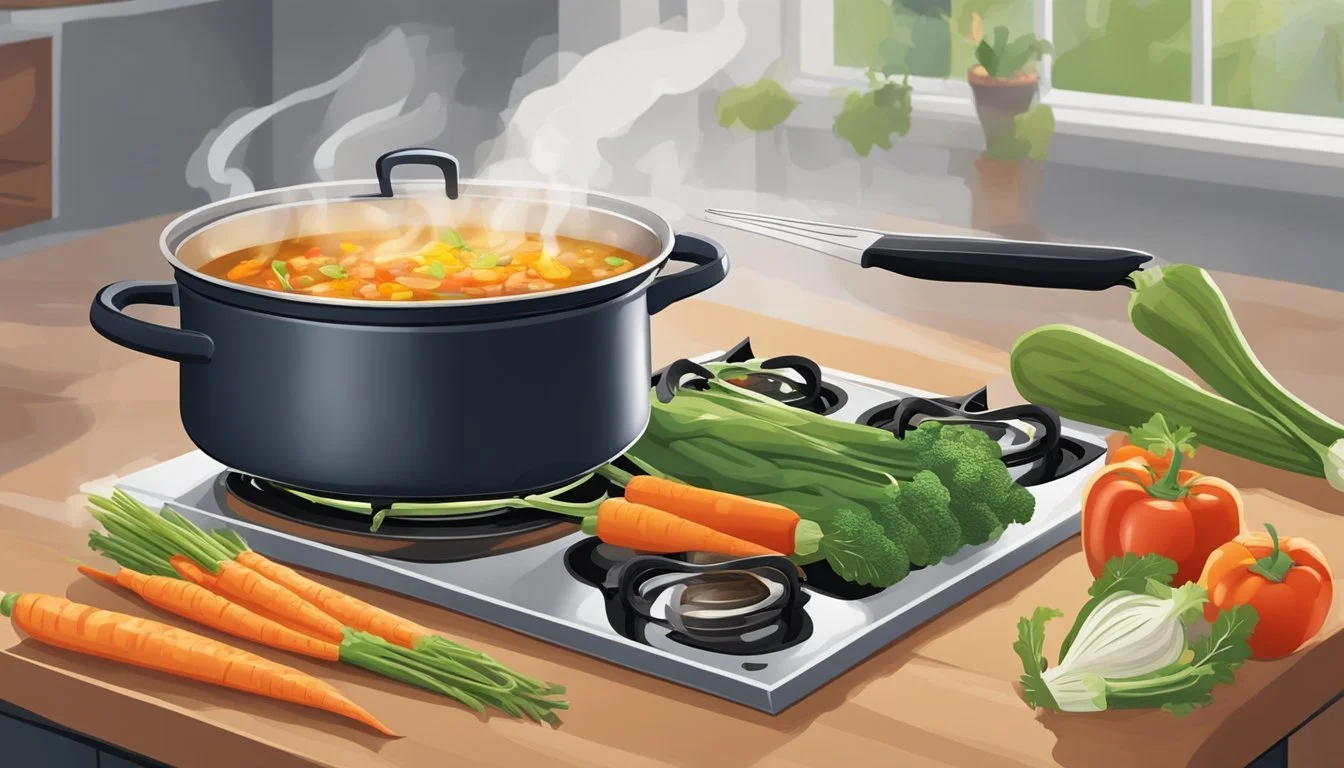How to Cook When You're Supporting a Sick Family Member
Quick, Nutritious Meal Ideas
Supporting a sick family member often extends beyond providing emotional comfort and medical care. Food preparation becomes a critical element of care, offering both nourishment and a sense of solace. It's important to choose meals that are not just nutritious and comforting but also easy to prepare and store.
Creating dishes that can be easily reheated or frozen ensures the caregiver can manage their time effectively while still providing for the needs of the ill individual. The goal is to prepare meals that are soothing for the sick family member, yet practical for those functioning in a caretaking capacity. This includes choosing ingredients that simplify the cooking process, like pre-cooked proteins or pre-shredded cheese, and considering the specific dietary needs and preferences of the convalescent.
Careful selection of recipes can play a role in lifting the spirits of those who are unwell. Traditional dishes such as chicken noodle soup or beef stew (What wine goes well with beef stew?) are often favored for their comforting qualities. In times of illness, these familiar and easily digestible meals can provide a certain degree of comfort and help with recovery. Meals that are rich in nutrients also support the immune system, further aiding the healing process.
Understanding Nutritional Needs
When caring for a sick family member, providing meals that are rich in essential nutrients and balanced in vitamins and proteins is critical. These meals help to bolster their immune system and aid in their recovery process.
Importance of Nutrient-Rich Meals
Nutrient-rich meals play a pivotal role in supporting a patient's immune system. Nutrients such as vitamins A and C, zinc, and selenium contribute to the proper functioning of the immune system. Meals should be focused on including a variety of fruits and vegetables, which are natural sources of vitamins and minerals. For example, carrots and sweet potatoes (What wine goes well with sweet potatoes?) are excellent sources of vitamin A, which is important for maintaining the integrity of the respiratory tract.
Balancing Vitamins and Proteins
Maintaining a balance between vitamins and proteins in the diet is essential for supporting the body's repair mechanisms. Proteins are the building blocks that the body uses to repair tissue, while vitamins, especially vitamin A, play a role in the maintenance of skin and mucosal cells, which are the body's first line of defense against pathogens.
Key Nutrient Food Sources Protein Chicken, fish, beans, tofu Vitamin A Carrots, sweet potatoes, kale, spinach Energy Whole grains, nuts, lean meats
Patients may need an increased protein intake to support healing, particularly if they are facing an infection or recovering from surgery. Energy-providing foods are also important, and should be paired with protein to ensure maintaining muscle mass and overall strength during recovery. Suitable options include lean meats, poultry, fish, or plant-based proteins such as beans and lentils.
Meal Planning Strategies
When supporting a sick family member, effective meal planning involves considering their preferences and dietary restrictions, as well as organizing preparation and cooking to ensure meals are readily available.
Incorporating Preferences and Allergies
Preferences: It's crucial to consider the sick individual's taste preferences and appetite when planning meals. They may have a reduced appetite or crave comfort foods. One should select recipes that are not only nourishing but also appealing to them, incorporating their favorite ingredients when possible. For instance, if they enjoy pasta, consider easy-to-swallow options like brown butter parmesan pasta, which is both comforting and simple to prepare.
Allergies: Equally important is accounting for any food allergies or sensitivities. Incorporating safe ingredients and avoiding cross-contamination during meal prep is key. For a family member with a gluten allergy, one might choose a recipe like Creamy Cauliflower Soup rather than a wheat-based dish.
Safe ingredient checklist:
Verify all ingredients for potential allergens
Use separate utensils and cutting boards for allergy-safe meal prep
Preparation and Cooking Schedules
Preparation: To minimize stress and kitchen time, planning meals that can be prepared in advance is wise. On a busy day, a slow cooker can be invaluable; for example, Classic Beef Stew requires minimal hands-on time and can simmer throughout the day, ready to serve when needed.
Cooking Schedules:
Batch Cooking: Prepare and cook large quantities of meals that can be eaten over several days. This approach is time-efficient and ensures food is available on demand.
Freezer-Friendly Meals: Cook meals that freeze well, so they can be thawed and reheated. Casseroles, stews, and soups like Grandma's Chicken Noodle Soup are excellent for this purpose.
Utilizing a meal schedule can aid in organizing cooking times and ensuring a variety of meals:
Day Meal Preparation Monday Beef Stew Slow cooker (8 hrs) Tuesday Chicken Soup Batch cook (2 hrs) Wednesday Parmesan Pasta Cook on demand (30 mins)
Selecting Appropriate Recipes
When caring for a sick family member, selecting recipes that offer comfort, ease of eating, and energy-boosting nutrients is crucial for their recovery and well-being.
Comforting Soups and Stews
Soup is a traditional go-to for illness. It’s gentle on the stomach, hydrating, and typically easy to digest. Hearty soups such as chicken noodle soup or a vegetable soup provide essential nutrients. One might consider including:
Chicken Noodle Soup: A classic made with a clear broth, gentle on the stomach and soothing for sore throats.
Lentil Soup: Packed with protein and fiber, it's nutritious and can be made vegetarian.
Bean Soup: A robust option that combines hydration with substantial nutrients.
Easy-to-Chew Casseroles
Casseroles are another excellent option. They are comforting meals that can often be prepared in advance. Recipes should be soft, easily digestible, and nutritious:
Chicken Pot Pie (What wine goes well with chicken pot pie?): Filled with tender chicken and vegetables, encased in a soft pastry.
Macaroni and Cheese: Creamy and soft, providing calories and comfort.
Vegetable-Based Casseroles: Include soft-cooked options like squash or zucchini for a vegetarian-friendly dish.
Energy-Boosting Meals
Meals that are rich in vitamins and proteins can help boost the energy of a person who is unwell. Such meals should be easy to prepare and eat:
Chicken: Easily digestible and versatile, it can be served as a simple grilled breast or incorporated into soups.
Pork Chops: Another protein alternative, best served tender.
Collard Greens: Full of vitamins and minerals, these can be cooked until soft for ease of eating.
By selecting appropriate recipes within these categories, one can ensure their sick family member is nourished with meals that are both comfortable to consume and beneficial for their recovery.
Adapting Cooking for Comfort
When supporting a sick family member, the goal is to provide meals that are both nurturing and easy to digest. The focus lies on warm, comforting foods that can also create a soothing environment conducive to recovery.
Choosing Warm and Comforting Foods
Selecting the right ingredients and dishes can make a significant difference in comfort cooking. Ingredients like tomato, garlic, and parmesan are not only flavorful but also provide a sense of warmth and nourishment. A few examples of comforting recipes include:
Tomato Soup: A classic comfort food that is both warm and smooth, often seasoned with garlic and herbs.
Garlic Chicken: Gentle on the stomach and infused with the healing properties of garlic.
Parmesan-laden Dishes: Such as brown butter parmesan pasta, which offers a rich flavor and easy-to-swallow texture.
Creating a Soothing Environment
The experience of eating comfort food goes beyond taste; it includes the ambiance. Here are ways to enhance the environment:
Serve Meals Warm: Ensure that comfort food like soups and casseroles are served warm to amplify their soothing effects.
Gentle Aromas: The smell of garlic simmering or a tomato sauce cooking can provide a comforting aroma that fills the home.
Soft Textures: Easy-to-eat foods that don’t require much effort to chew, such as soft bread or creamy risottos, can be more appealing when one's appetite is reduced.
By focusing on these details, one can transform cooking into an act of care that comforts and soothes a sick family member.
Cooking Efficiencies and Tips
When caring for a sick family member, efficiency in the kitchen is crucial. Utilizing time-saving appliances and strategies can simplify meal preparation, ensure nutritious meals, and minimize kitchen chaos.
Utilizing Instant Pot and Slow Cookers
Instant Pots and slow cookers are invaluable for cooking comforting meals with minimal effort. Recipes that normally take hours can be significantly condensed using an Instant Pot, which also simplifies the cooking process. Slow cookers offer the advantage of "set it and forget it" meals, slowly cooking dishes like stews and soups over several hours, which is ideal for busy caretakers.
Preparing Meals in Bulk
Cooking meals in bulk reduces the frequency of cooking tasks and guarantees that a ready-to-eat meal is always available. Bulk meals can be efficiently portioned into containers and stored for later use. This is especially helpful for dishes that retain their flavor and texture well when reheated, such as casseroles or lasagnas.
Storing and Labeling Leftovers
Proper storage and labeling of leftovers are essential for maintaining meal freshness and making reheating convenient. Use clear containers to store leftovers in the refrigerator or freezer, and label them with the contents and the date prepared. This practice helps to keep track of what is available and ensures food safety for the family member in recovery.
Support beyond the Kitchen
Caring for a sick family member extends past preparing meals; it encompasses organizing support systems and providing emotional comfort.
Setting Up a Meal Train
A meal train is an organized system of delivering meals to a person or family in need. To set one up effectively:
Choose a Coordinator: Select someone to manage the meal train, inviting participants and scheduling deliveries.
Use Online Tools: Platforms like MealTrain.com streamline the process, allowing participants to sign up for specific days and meal preferences.
Communicate Dietary Restrictions: Ensure that the patients' dietary needs are clear to all contributors to avoid any health complications.
Offering Sympathy and Understanding
Displaying sympathy and understanding is vital when supporting a sick family member. Here's how to do it:
Acknowledge Their Situation: It's important to recognize the difficulty they're facing without making assumptions about their experiences.
Listen Actively: Offer a supportive ear and respond with thoughtful, empathetic communication.
Respect Privacy: Understand that they might prefer to keep details private, and be mindful of their space and need for quiet time.
Additional Healthy Meal Ideas
When supporting a sick family member, meals that are easy to prepare and packed with nutrients can be particularly comforting and restorative. Below are additional meal ideas that focus on freshness and heartiness to provide balanced nutrition and comfort.
Refreshing Salads and Vegetables
Polenta Salad: A chilled polenta salad serves as a light yet satisfying option. One can incorporate a variety of vegetables like cherry tomatoes, arugula, and roasted bell peppers for color and nutrition.
Stuffed Sweet Potato: An excellent vehicle for a variety of toppings, a baked sweet potato can be stuffed with a protein-packed hummus dressing and an assortment of greens for a balance of flavor and nutrition.
Nourishing Hearty Alternatives
American Goulash: It’s a hearty mixture of macaroni, ground beef, tomatoes, and onions, seasoned with paprika and other spices. This dish provides both comfort and calories, which can be beneficial for someone who needs more energy while recovering.
Creamy White Chili: Cream cheese adds a smooth texture to this white chili, which is brimming with chicken and white beans. It's a warming dish that brings comfort on difficult days, offering proteins and fibers.
Crab (how long does crab last?) Delight: Crab can be prepared in a soup or added to a light pasta dish, providing an excellent source of lean protein. It’s a comforting choice for someone who may want a break from heavier meals.
Concluding Tips
When supporting a sick family member, the little adjustments in meal preparation and delivery can make a significant difference. Below are strategic approaches to ensure meals offer the most benefit and convenience.
Maintaining Consistency in Care
Consistency in care is crucial when providing meals for a sick family member. Meal scheduling helps in ensuring that the patient receives nutrients at optimal times, which is important for recovery. It's beneficial to coordinate with other caretakers to maintain a steady flow of meals that adhere to any dietary restrictions the family member might have.
Set a Meal Calendar:
Plan ahead and use a shared calendar with reminders.
Coordinate with family and friends to cover meal times without overlaps.
Prepare in Batches:
Cook large quantities and divide into portions.
Label the meals with the contents and reheating instructions.
Easy-to-Handle Servings:
Serve food in containers that are easy for the sick family member to handle, especially if they have limited strength or mobility.
Food Safety:
Always store food at the correct temperature.
Use airtight containers to keep meals fresh and free from contamination.
By implementing these structured strategies, caretakers can deliver nourishing meals in a way that supports health and provides comfort to the family member in need.








